You know that slight pang of guilt you feel when strapping on your hiking boots, worried about the carbon footprint you’re leaving behind? Trust me, I’ve felt it too. Just like you, I cherish every moment spent in the great outdoors and want to do my part in safeguarding our open landscapes for future generations.
In this article, I am eager to share some insights on how we can all keep exploring those trails we so deeply love while also showing kindness and respect to Mother Earth. Ready for a light-footed adventure towards sustainable hiking? Let’s stride ahead together!
Key Takeaways
- Eco – friendly hiking helps protect the environment by minimizing our impact on trails, wildlife, and plants.
- Choose sustainable practices like following Leave No Trace principles, planning ahead, and disposing of waste properly.
- Explore local hiking trails to reduce carbon emissions and support local businesses.
- Respect wildlife and vegetation, avoid starting fires, and pack sustainably for a more eco-conscious hiking experience.
The Importance of Eco-Friendly Hiking
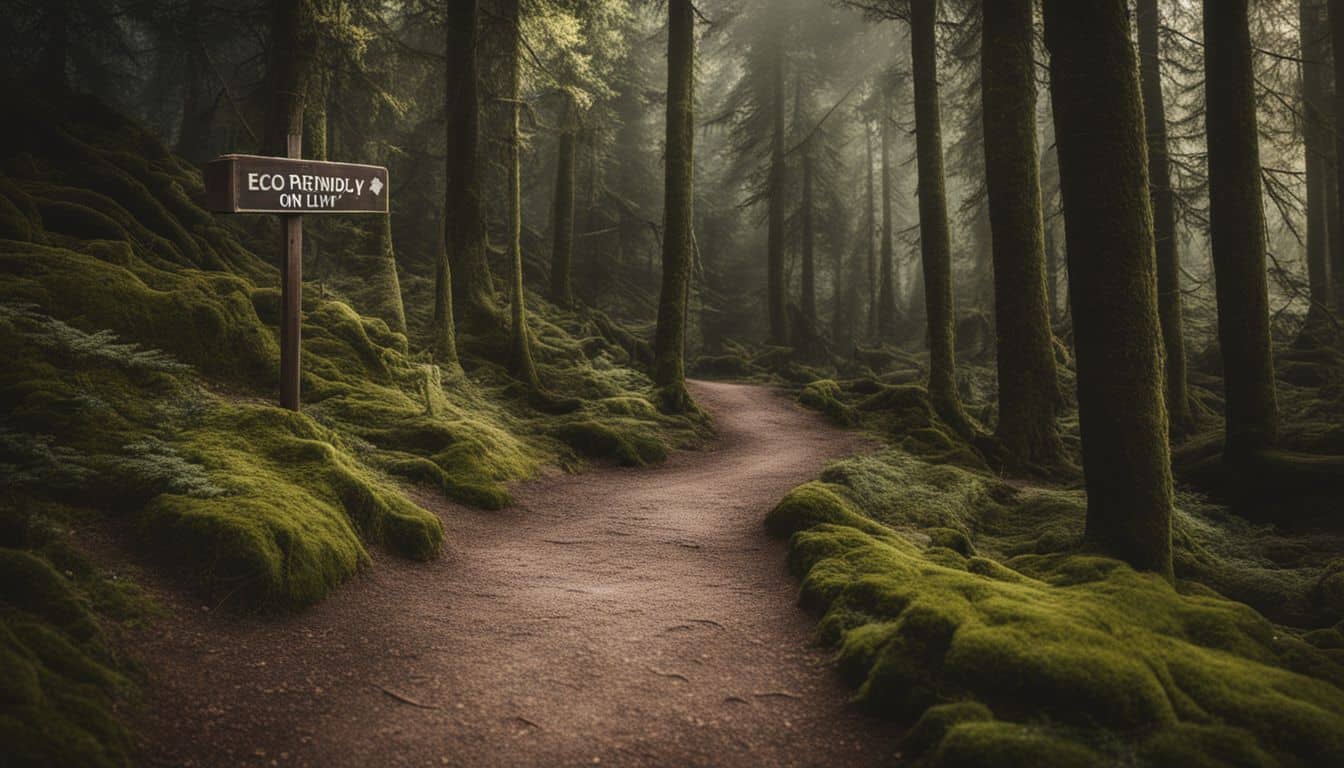
We all know that hiking is fun. It’s a great way to stay fit and enjoy nature. But it can also leave marks on the environment. Eco-friendly hiking helps us enjoy the outdoors without hurting it.
We protect animals and plants when we hike in a green way.
This kind of hiking keeps trails clean too. Trash can spoil the beauty of nature or even harm wildlife if not taken care of right away. Plus, eco-friendly hikers help stop fires by keeping flames out of forested areas.
They dress in earth-kind clothes as well, which lessens their mark on our planet even more.
Being aware while choosing paths plays a big role in being an eco-friendly hiker too! By picking routes with fewer people and staying mindful about delicate environments, we make sure our footprints don’t hurt Mother Nature in any way.
So you see, eco-friendly hiking isn’t just good for us—it’s good for every living thing around us!
Guide to Eco-Friendly Hiking Practices
I am a firm believer in doing what we can to save our planet. Eco-friendly hiking is one of the ways we can help. Here are some tips I have learned:
- Follow Leave No Trace Principles: They guide us on how to stay eco-conscious while hiking.
- Plan Ahead and Prepare: Good planning helps avoid harm to nature.
- Dispose of Waste Properly: Make sure you take all trash with you off the trail.
- Explore Local Hiking Trails: Hiking close to home cuts down transport emissions.
- Stay On Designated Paths: This keeps plants safe from being stepped on.
- Be Mindful of Your Choices: Always think about how your actions will affect nature.
- Pick Your Routes Carefully: Some trails are friendlier to the environment than others.
Sustainable Tips for Eco-Friendly Hiking
Explore locally, avoid overcrowded places or go off-season, properly dispose of waste, including human waste, stick to established trails, respect wildlife and vegetation, support local businesses, and avoid starting fires.
These tips will help you enjoy a more sustainable hiking experience. Read on to learn more about eco-conscious hiking practices!
Explore locally
I love to hike close to home. It’s fun and good for the earth too. We cut down on car use when we stay local, so it lowers our carbon footprint. Plus, there are great perks! You get to see all the neat things nature has in your own backyard.
You won’t believe how much stress melts away when you take time to enjoy nature just steps from your door! And don’t forget about local gear shops and food places. They often have eco-friendly options that can make your hiking even better.
Avoid overcrowded places or go off-season
When hiking, it’s important to consider avoiding overcrowded places or going off-season. This helps reduce the impact on popular trails and preserves their natural beauty. By choosing to hike during less busy times, you can enjoy a more peaceful and serene experience in nature.
Not only does this minimize trail congestion, but it also helps protect wildlife and vegetation along the way. So why not plan your next hiking adventure during the off-season and explore less crowded trails?.
Properly dispose of waste, including human waste
Properly disposing of waste, including human waste, is essential for eco-friendly hiking. It helps prevent pollution and protects the local ecology. When hiking, it’s important to follow land management guidelines and use designated facilities or techniques for disposing of human waste.
Trash should also be disposed of properly to avoid littering and harming the environment. Remember to consider the impact of your food choices and dispose of food waste responsibly too.
And don’t forget about medical and sewage waste – make sure they’re properly taken care of during your hiking trips. Let’s keep our beautiful trails clean and preserve nature for future generations!
Stick to established trails
When hiking, it’s important to stick to established trails. This helps protect the environment by reducing the disruption of the ecosystem. Trails are carefully planned and designed with consideration for the impact on nature.
By staying on these designated paths, you can minimize any harm to plants, wildlife, and their habitats. Plus, it helps preserve the beauty of the natural surroundings for others to enjoy.
So next time you go hiking, remember to follow the established trails and be a responsible hiker.
Respect wildlife and vegetation
When hiking, it’s important to respect wildlife and vegetation. We should observe animals from afar and not disturb them. This means not feeding or touching them, as it can disrupt their natural behavior.
It’s also crucial to stay on designated trails so that we don’t damage the plants and trees around us. Taking flowers, plants, rocks, earth, or sand with us is a big no-no since it can harm the ecosystem.
Let’s remember to leave nature untouched for future hikers to enjoy too!
Support local businesses
When it comes to eco-friendly hiking, supporting local businesses is an important practice. By choosing to spend our money at local establishments, we are promoting sustainable practices in the community.
This helps boost the local economy and encourages business owners to adopt more environmentally-friendly approaches. Not only does this contribute to the growth of eco-friendly tourism, but it also reduces the strain on popular hiking destinations by diverting some of the tourist traffic.
So, next time you’re planning a hike, consider supporting local businesses and enjoy the benefits of sustainable hiking.
Avoid starting fires
Starting fires while hiking can be harmful to the environment and wildlife. It is important to follow fire regulations and refrain from making open fires, especially when wild camping.
Fires can cause damage to the ecosystem and pose a risk to wildlife preservation efforts. When considering starting a fire, hikers should think about factors like wind conditions and only use dead or detached sticks for fuel.
By avoiding fires, we can ensure that we are practicing responsible hiking and protecting our natural surroundings.
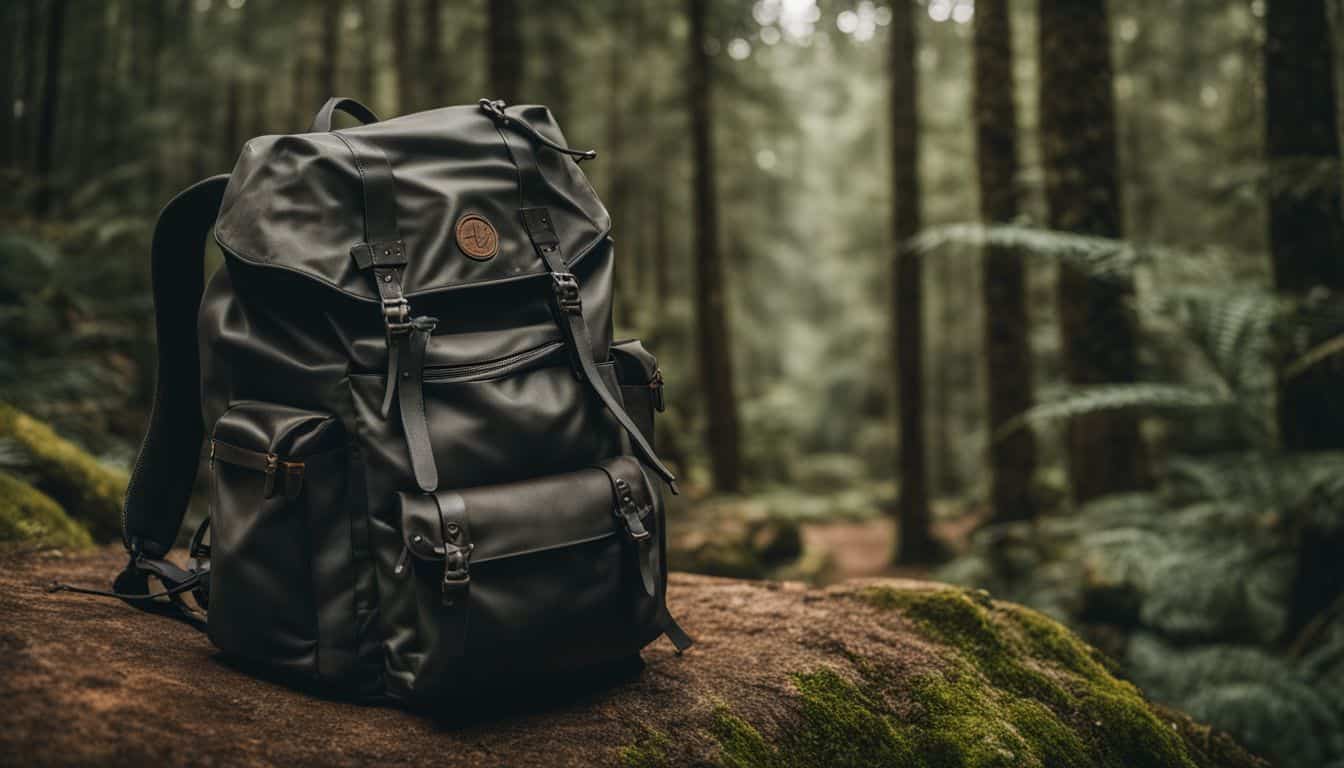
The Ultimate Sustainable Hiking Packing Guide
When packing for an eco-friendly hike, choose a sustainable backpack, carry a reusable water bottle and purifier, pack sustainable food containers, bring eco-friendly hygiene items, use environmentally-friendly sunscreen and bug repellent, carry navigation tools, include a first-aid and survival kit, and pack appropriate clothing for different weather conditions.
Choose a sustainable backpack
When it comes to eco-friendly hiking, one important aspect is choosing a sustainable backpack. It’s essential to opt for backpacks made from recycled materials or those labeled as environmentally friendly.
Brands like Jack Wolfskin offer hiking backpacks that are made from recycled materials, contributing to a more sustainable approach. Research different options and find the right backpack that aligns with your values of reducing environmental impact while enjoying the great outdoors.
By choosing a sustainable backpack, you can make a positive difference in preserving nature during your hikes.
Carry a reusable water bottle and purifier
I always make sure to bring my reusable water bottle and purifier when I go hiking. It’s such an easy way to reduce waste and stay hydrated on the trail. Instead of buying single-use plastic bottles, I can fill up my reusable bottle at water sources along the way or use my purifier to make sure any water I find is safe to drink.
Plus, it helps me save money too! Having a reusable water bottle is just one small step towards practicing sustainable hiking, but every little bit counts when it comes to protecting the environment.
Pack sustainable food containers
When packing for a sustainable hiking trip, it’s important to consider the environmental impact of your food containers. Instead of using single-use plastic bags and bottles, opt for sustainable alternatives.
Look for reusable food containers made from eco-friendly materials like stainless steel or BPA-free plastics. These containers are not only durable but also help reduce plastic waste.
By choosing sustainable food containers, you can contribute to a greener hike and minimize your environmental footprint on the trail. So remember to pack your snacks and meals in reusable containers that are kinder to the planet!
Bring eco-friendly hygiene items
In my Ultimate Sustainable Hiking Packing Guide, I want to stress the significance of bringing eco-friendly hygiene items when you go hiking. It’s essential to be mindful of our impact on the environment even when we’re out in nature.
Instead of using single-use products like razors, wipes, and plastic water bottles, it’s better to invest in reusable alternatives. Try opting for sustainable hiking gear made from eco-friendly materials such as recycled plastic or organic cotton.
And remember, proper waste disposal is crucial—make sure to pack out your toilet paper, wipes, bags, and tampons and dispose of them responsibly in designated areas. By practicing these eco-friendly outdoor hygiene habits while hiking, we can minimize our environmental impact and contribute to a cleaner planet.
Use environmentally-friendly sunscreen and bug repellent
When it comes to hiking, it’s important to protect yourself from the sun and pesky bugs. That’s why using environmentally-friendly sunscreen and bug repellent is crucial. Look for products made with natural ingredients that are free from chemicals.
Opt for reef-safe sunscreen that offers broad-spectrum protection against UVA and UVB rays. Choose bug repellents that are kind to your skin while being safe for the environment. By using these eco-friendly options, you can enjoy your hike without harming nature or yourself.
Carry navigation tools
Navigation tools are really important when it comes to sustainable hiking. They help you find your way and stay safe while exploring the outdoors. Some examples of navigation tools include maps, compasses, altimeter watches, GPS devices, and personal locator beacons.
These tools can help you determine your location, track your route, and even call for help in an emergency. It’s always a good idea to have these tools with you when you go hiking so that you can navigate confidently and responsibly.
Include a first-aid and survival kit
When hiking, it’s important to be prepared for any emergency. That’s why including a first-aid and survival kit in your hiking gear is crucial. A first aid kit should contain items like adhesive bandages, medical tape, and antibiotic ointment to treat minor cuts and injuries.
Additionally, a survival kit consisting of essential items like a flashlight, whistle, compass, and emergency blanket can help you in unexpected situations. Remember to pack these kits in your backpack on every hike to ensure your safety and well-being.
Safety equipment is key when enjoying outdoor adventures!
Pack appropriate clothing for different weather conditions
When going hiking, it’s important to pack the right clothing for different weather conditions. You want to be prepared and comfortable during your hike. For optimal comfort, consider using a layering system with synthetic fabrics that are breathable and have insulating properties.
This will help you stay warm in colder weather and cool in warmer weather. It’s also important to choose durable clothing that dries quickly and provides protection from the elements.
Regardless of the season, wearing waterproof and moisture-wicking clothing is recommended. So remember, when packing for your hike, think about the climate conditions you’ll be facing and choose your outdoor clothing accordingly.
Leave No Trace Principles for Hiking
When hiking, it’s important to follow the Leave No Trace principles. These guidelines help us minimize our impact on the environment and preserve the beauty of outdoor spaces. Here are the six main principles to keep in mind while hiking:
- Stay on designated trails and avoid cutting switchbacks. This helps protect vegetation and prevents soil erosion.
- Concentrate use on existing trails and campsites. By sticking to established paths, we can minimize damage to natural areas.
- Dispose of waste properly. Make sure to pack out all trash, including food scraps, and properly bury human waste at least 200 feet from water sources.
- Leave natural items undisturbed. Avoid picking flowers or removing rocks, as these play a vital role in the ecosystem.
- Respect wildlife. Keep your distance and do not feed or approach animals. Remember that we are guests in their homes.
- Be mindful of noise pollution. Keep conversations and music at a low volume so as not to disturb other hikers or wildlife.
Reduce Single-Use Plastics
Reducing single-use plastics is crucial for protecting the environment while hiking. Plastic waste, such as disposable water bottles and food containers, can harm wildlife and pollute our oceans.
To make a positive impact, I always bring reusable alternatives on my hikes. Instead of using plastic water bottles, I carry a reusable water bottle and purifier to refill along the way.
I also pack sustainable food containers to avoid relying on single-use packaging.
Another great tip is to choose food without plastic packaging when planning your meals for the hike. By doing this, you can reduce your plastic footprint significantly. Additionally, bringing a reusable bag allows me to properly dispose of any waste without relying on plastic bags that contribute to pollution.
It’s important for us hikers to remember that every small step counts in reducing single-use plastics. Making these eco-conscious choices helps protect our environment and preserve it for future generations.
Practice Responsible Waste Management
Responsible waste management is crucial for eco-friendly hiking. When we hike, it’s important to dispose of our waste properly to minimize its impact on the environment. This means packing out all of our trash, including food wrappers and other non-biodegradable items.
By doing this, we can ensure that these materials don’t end up harming wildlife or polluting natural areas.
Another aspect of responsible waste management is properly disposing of human waste. When nature calls on the trail, it’s essential to use designated restrooms or burying toilets (cat holes) if available.
This helps prevent contamination and keeps the hiking area clean for everyone to enjoy.
Remember: leave no trace behind! It’s our responsibility as hikers to take care of the places we love and leave them just as beautiful as when we found them. So let’s practice responsible waste management by packing out all trash and using proper bathroom facilities or burying toilets while hiking.
Together, we can protect our outdoor spaces for future generations to explore and appreciate.
Support Local Conservation Efforts
Supporting local conservation efforts is essential for preserving the environment and ensuring sustainable hiking experiences. Here are some ways you can contribute:.
– Participate in volunteer programs organized by local conservation organizations.
– Donate to community-based initiatives focused on environmental preservation.
– Share your knowledge and experiences with others to raise awareness about the importance of conservation.
– Purchase locally made products that promote sustainability and support the local economy.
– Stay at eco-friendly accommodations that prioritize conservation practices.
– Follow all rules and regulations set by protected areas to minimize negative impacts on wildlife and vegetation.
– Join or support advocacy groups working towards nature conservation in your area.
Remember, every small effort counts in protecting our natural resources for future generations.
Educate Yourself and Others on Sustainable Hiking
I want to share some tips on how we can educate ourselves and others about sustainable hiking.
– Learn about the importance of environmental awareness and how it relates to eco-friendly hiking.
– Share your knowledge with fellow hikers and encourage them to adopt sustainable practices.
– Spread the word on social media platforms, blogs, or through local community groups.
– Participate in workshops or events that focus on sustainable hiking practices.
– Support organizations that promote conservation efforts and responsible hiking.
– Teach others about Leave No Trace principles, which help minimize our impact on nature.
– Discuss the harmful effects of single-use plastics and advocate for reducing their use while hiking.
– Inform hikers about responsible waste management techniques, such as packing out what you pack in.
– Raise awareness about sustainable tourism and its positive impact on local economies and ecosystems.
Remember, educating ourselves and others is key to creating a more ecoconscious hiking community. Together, we can make a difference!
Conclusion on Eco-Friendly Hiking Practices
In conclusion, practicing eco-friendly hiking is essential for the growth and preservation of our natural environment. By following these 7 top tips, such as exploring locally, packing sustainably, and respecting wildlife, we can enjoy the beauty of nature while minimizing our impact on it.
Let’s hike responsibly and leave a positive footprint behind for future generations to cherish.
FAQs on Eco-Friendly Hiking Practices
1. Why is it important to practice eco-friendly hiking?
Practicing eco-friendly hiking helps protect the environment, preserve natural resources, and maintain the beauty of outdoor spaces for future generations.
2. What are some eco-friendly practices I can follow while hiking?
Some eco-friendly practices you can follow while hiking include staying on designated trails, packing out your trash, minimizing noise pollution, and respecting wildlife and their habitats.
3. How can I reduce my impact on fragile ecosystems while hiking?
To reduce your impact on fragile ecosystems while hiking, avoid trampling vegetation, keep a safe distance from sensitive areas or wildlife, and refrain from feeding animals.
4. Should I bring any specific gear for eco-friendly hiking?
Bringing reusable water bottles and food containers instead of single-use plastic ones is a great way to reduce waste during your hike. Additionally, using biodegradable toiletries such as soaps and sunscreen can help minimize harm to nature.
5. Are there any other ways I can contribute to sustainable outdoor practices beyond just hiking?
Yes! You can contribute to sustainable outdoor practices by carpooling or using public transportation when going to trailheads, supporting local conservation organizations financially or through volunteer work, and educating others about the importance of protecting natural environments.

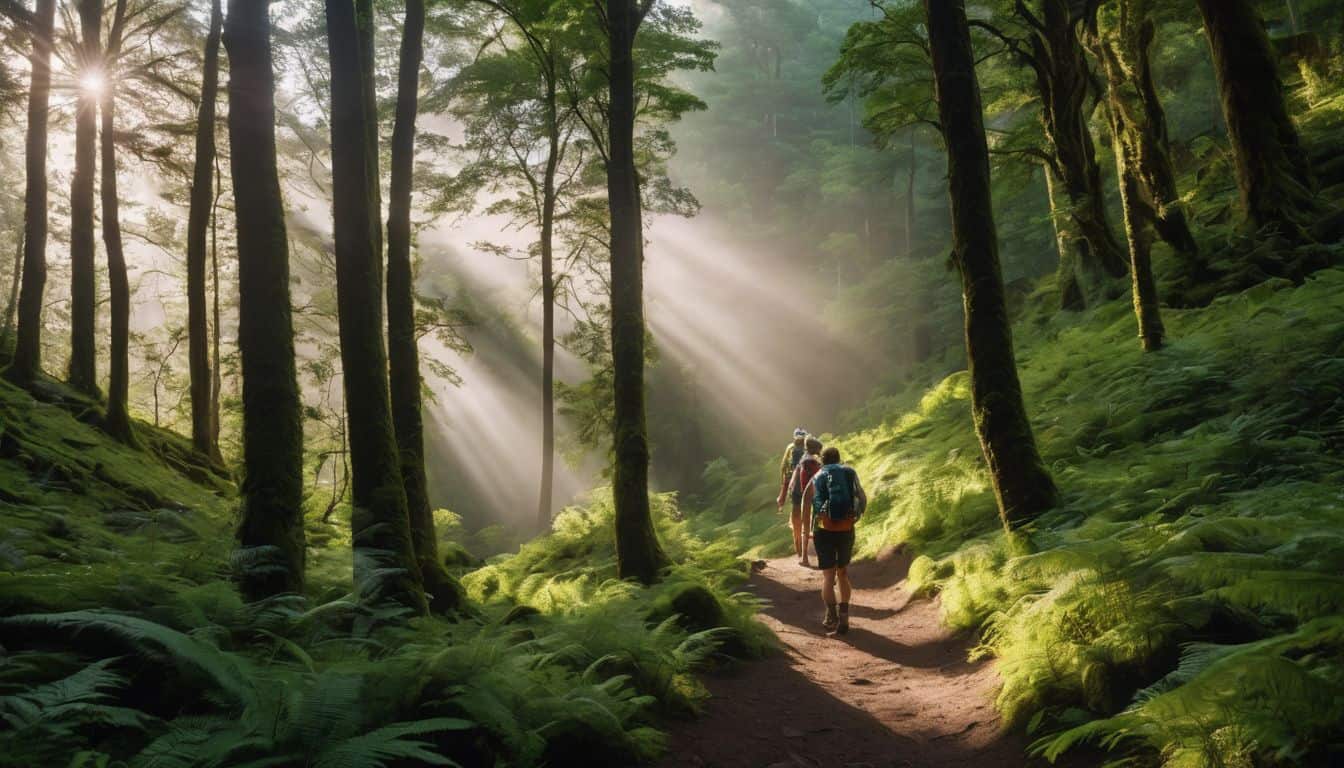
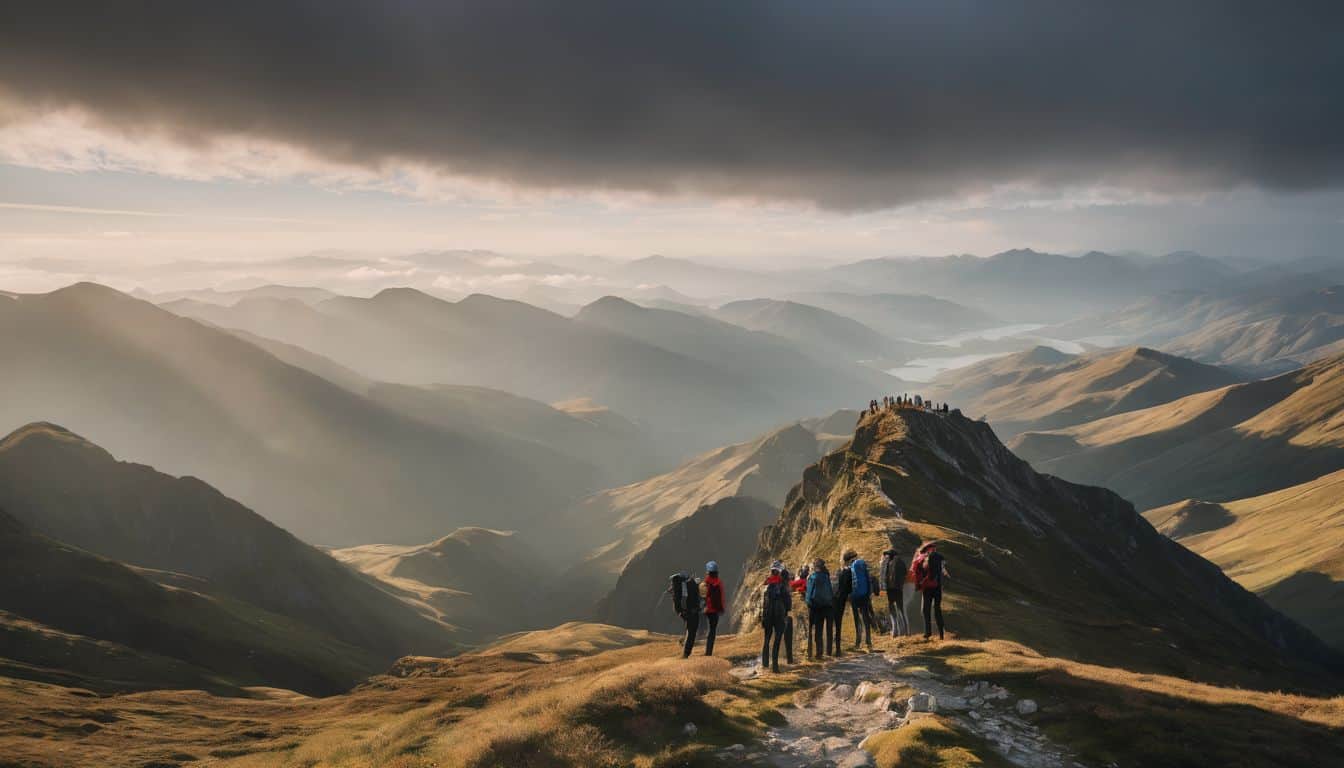
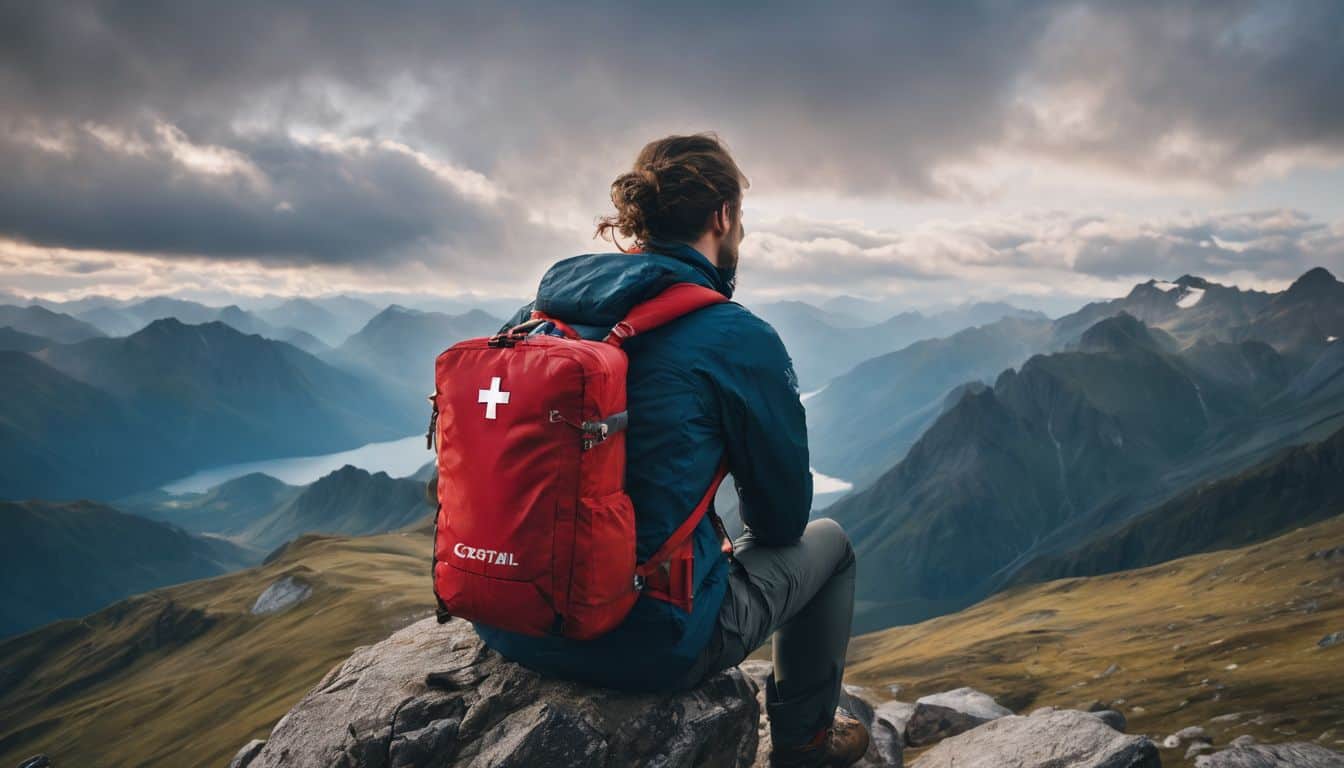
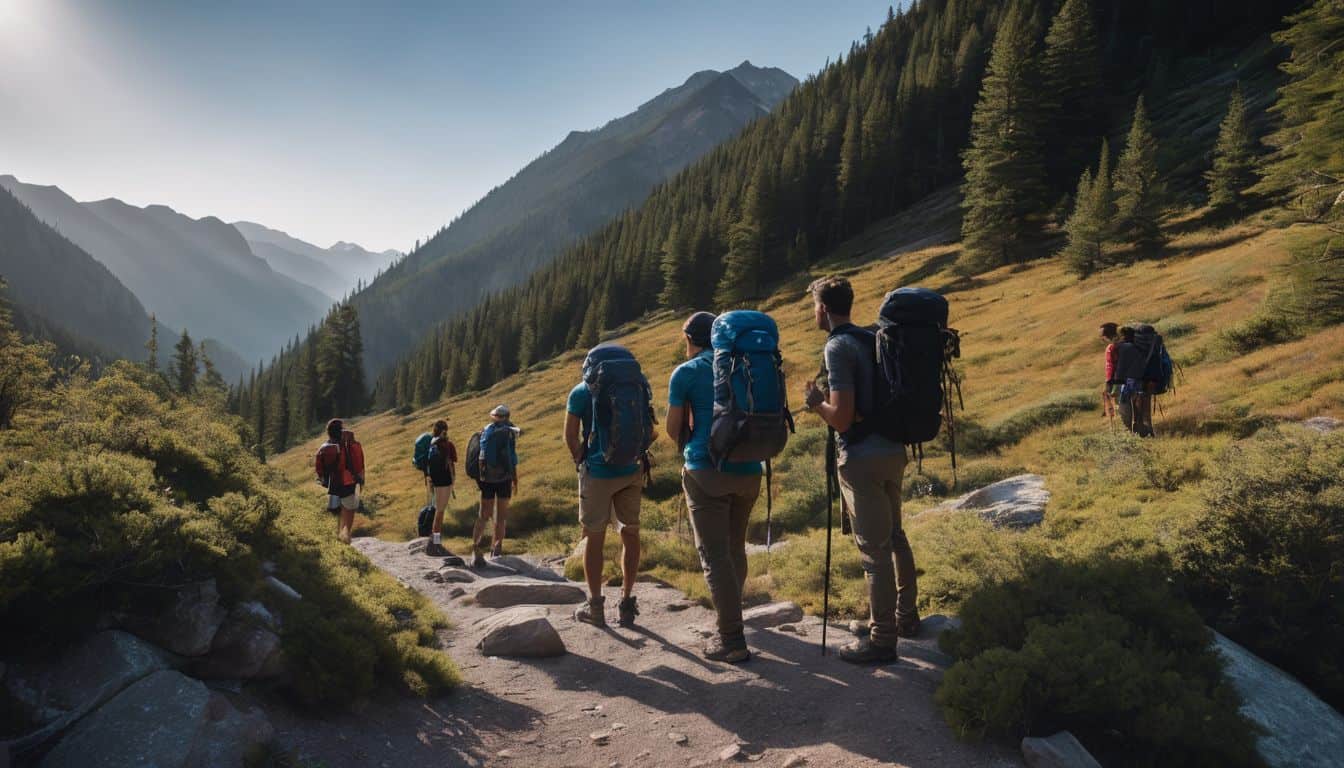
Leave a Reply